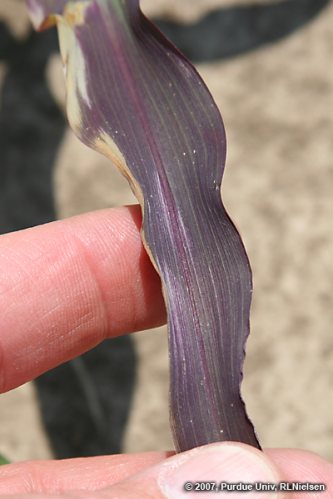Managing Fallow Syndrome on Prevent Plant Acres

“Rich on Agronomy” is an occasional agronomy column from PFS Account Manager Rich Larson.
Are you planting corn or wheat on last year’s sugarbeet ground or prevent plant acres?
Did you plant a cover crop or were your prevent plant acres kept black?
If you kept your prevent plant acres black, your field is a prime candidate for fallow syndrome on newly planted corn this spring. Fallow syndrome is very manageable, but will take you by surprise if you haven’t experienced it. If not managed, it can rob your yield.
Fallow syndrome occurs when small corn plants turn purple due to a phosphorus deficiency and the consequent buildup of excess sugars in the plant. This phosphorus deficiency is caused by the lack of mycorrhiza fungi (VAM) in the soil. It does not mean your soil is deficient of P. These fungi help corn, wheat, and other grass plants absorb phosphorus and zinc from the soil. You could consider them to be a natural extension of the corn root system. These fungi flourish in soil with the help of live plant roots.
Sugarbeets are an exception in that mycorrhiza fungi do not thrive on their roots. For this reason, fallow syndrome is also common in rotations when corn follows beets. Without live roots, these fungi deplete over a season and the next spring.
I have seen cases so severe, that when approaching a field, I could not see the corn plants as they blended into the soil. Corn usually grows out of this condition as the root system elongates and becomes larger. While the larger root system can uptake more of the P in the soil, yield is probably already lost. This effect is also seen during a very cold, wet spring. Growth of any kind, whether it is cover crops or even weed pressure, helps prevent fallow syndrome on these acres.
The cure is additional P with or near the row. Broadcasting additional P will not help. Placing starter P with or near your seed will help take care of the issue, with a rate of about 30#/a P205 with your starter. If you cannot apply a high rate P fertilizer near the row, you will mostly likely experience fallow syndrome and possibly yield loss due to delayed maturity, stunted growth, and reduced energy.
In summary, if you’re planting corn on a field that did not produce a crop last year, or a field that produced sugarbeets, make sure to bump up your P in or near the row at planting to avoid fallow syndrome.




